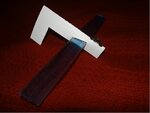MIflyer
Captain
If I understand you correctly, your plane on the runway has zero AoA and zero lift. And during the flight?
Give it a little back pressure and up she goes, but the elevator trim is limited to reduce the severity of stalls. It will stall but recovers on its own even if you keep the wheel back, after which it will stall and recover again. And it cannot spin.
When I look at the drawing you posted, I have the impression that this FOWLER FLAP is the best, because the wing still has an "even" shape, in a sense, this flap "enlarges" the wing. It looks nice.
A Fowler Flap is indeed nice, if rather complicated as well as expensive and heavy.
Last edited:

